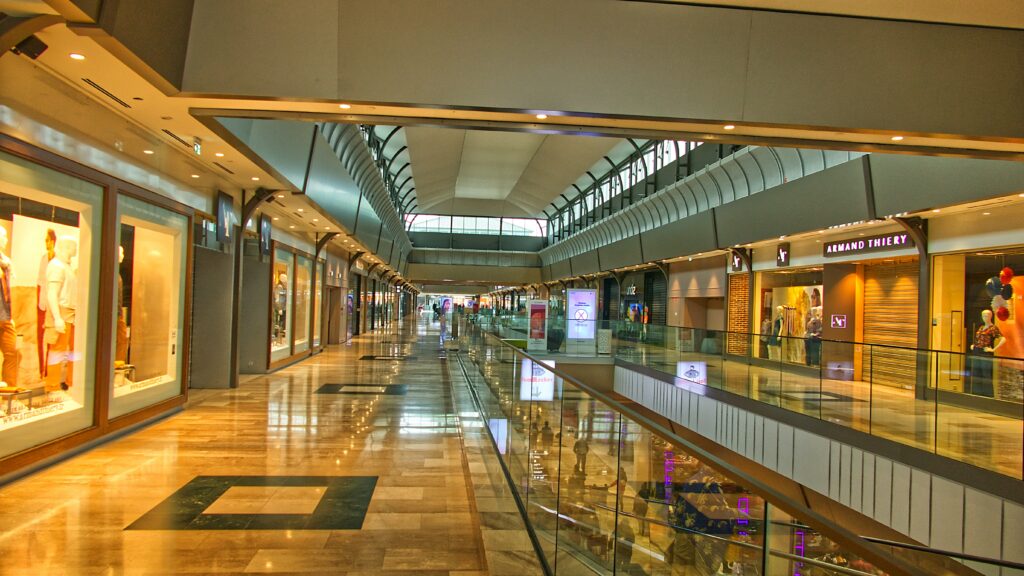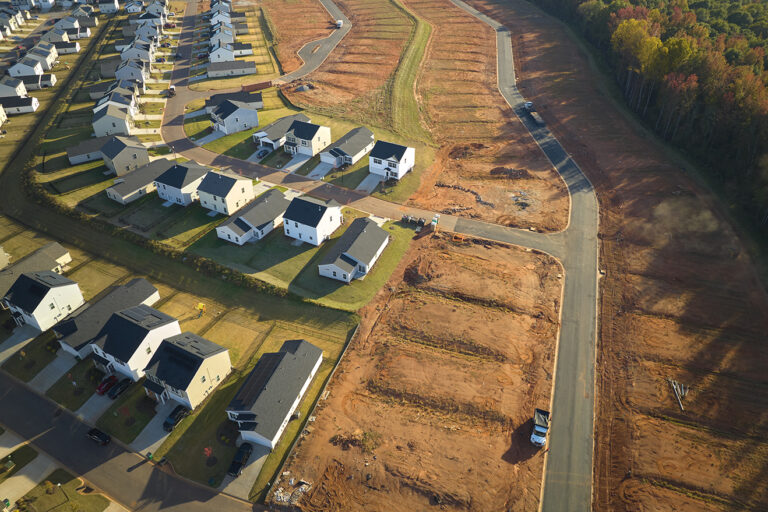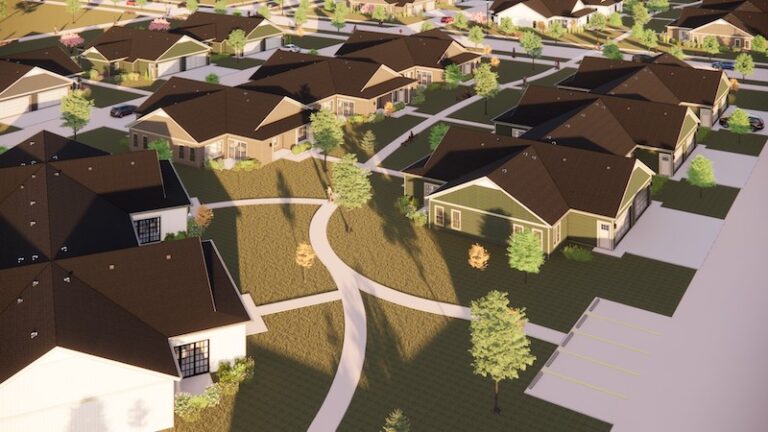The dynamic is pushing developers to repurpose mall sites into mixed-use projects that can supply both the housing and retail that communities need to thrive.
Source: “Malls Are Being Reborn As Next-Gen Mixed-Use Properties” by Kristin Mueller for Forbes.com on July 20, 2023.
At this point, the U.S. housing crisis is well documented. The nation is short some 6.5 million homes, and developers can’t seem to build fast enough to meet the demand. Experts expected rising interest rates to exacerbate the housing shortage by stalling development activity and further throwing off the housing supply-demand pendulum—but in May, there was some good news. U.S. homebuilding surged, rising 22% despite expectations that new construction activity would decrease. As it turns out, the low levels of housing supply increased builder confidence enough to offset economic concerns and rising costs. According to the National Association of Home Builders/Wells Fargo Housing Market Index, builder confidence is increasing for the first time in a year.
The confidence is helping to accelerate alternative opportunities for home building, and obsolete shopping malls have shot to the top of the list. While residential is in short supply, shopping malls are suffering from a problem of abundance. People don’t use or need as much physical retail space as they did in the past. Because retail has historically followed rooftops, most malls are already in dense population centers—the exact places most in need of housing. The dynamic is pushing developers to repurpose mall sites into mixed-use projects that can supply both the housing and retail that communities need to thrive. The new surge in housing construction has started to increase bids for mall redevelopment sites across the country.
Housing leads mall redevelopment projects
Housing is an ideal fit for mall redevelopment, and it is the use most frequently pursued by developers. In an analysis of 135 mall redevelopment projects, JLL found that 53.6% include housing. Comparatively, less than 34% convert to office, the second most added use. This doesn’t mean that retail is out. When converting a shopping mall, 85% of projects retain retail on the site, illustrating the value of merging uses in a single development.
It isn’t difficult to see the appeal of converting unused retail into housing. Malls are often in attractive locations where people want to live, unlike office or industrial projects that can be in undesirable areas for residential use. The footprint of a mall site (sprawling, flat and built for consumer use) is also easily adaptable to a residential use. And for retailers, there is an added benefit: housing supports retail and retail needs residential to survive. With residents (aka consumers) on site, housing can fulfill an anchor position at the property, adapting the standard retail model to fit modern living and shopping habits.
There are successful examples of these projects emerging across the country. In Orange County, California, The Westminster Mall is transforming into a mixed-use complex with 3,000 residential units, 425 hotel rooms and green space, while the Laguna Hills Mall is being redeveloped into 1,500 housing units, plus office, hotel and retail space, all of which is more aligned with community needs. There is ample opportunity for similar concepts across the country. The Urban Land Institute and National Multifamily Housing Council Research Foundation estimate that there is 1 billion square feet of obsolete retail in the US, meaning that these projects are likely to become more common.

Executing a successful redevelopment project
While housing is compatible with the mall format, redeveloping a property into a new use is never a simple endeavor. To start, developers should be careful to select the right site for their project. That is, selecting sites that are in markets with a clear need for housing and an oversupply of retail—the particular dynamic that makes a mall-to-housing conversion project viable.
Market dynamics are just one consideration. A conversion project will likely need adjustments to zoning and entitlements to reflect the new use; developers might also review incentives provided by local governments to convert underutilized real estate into housing. There are also operational nuances. Developers should work closely with management to navigate existing tenant relationships, including addressing existing lease agreements and negotiating early exits. Once complete, the developer may also need to execute a new tenant leasing strategy to capture businesses and retail concepts that better align with the new mixed-use format.
Due to the complexity in both executing a redevelopment project as well as the different operational needs of a mixed-use property, many developers and property managers are pursuing strategic partnerships. Last year, for example, JLL and Poag Shopping Centers formed an agreement for Poag to provide development services to JLL-managed properties, while JLL provides management services for Poag’s 10-property portfolio of lifestyle centers. The partnership illustrates the symbiotic relationship between redevelopment and operational functions, and a growing interest from owners in pursuing redevelopment opportunities.
Mall redevelopment projects are an opportunity to bring critical housing supply to the communities and neighborhoods that need it most. While developers will need to pursue an amalgam of development solutions to create enough supply to meet housing demand, mall redevelopments are certainly pushing the needle in the right direction.




